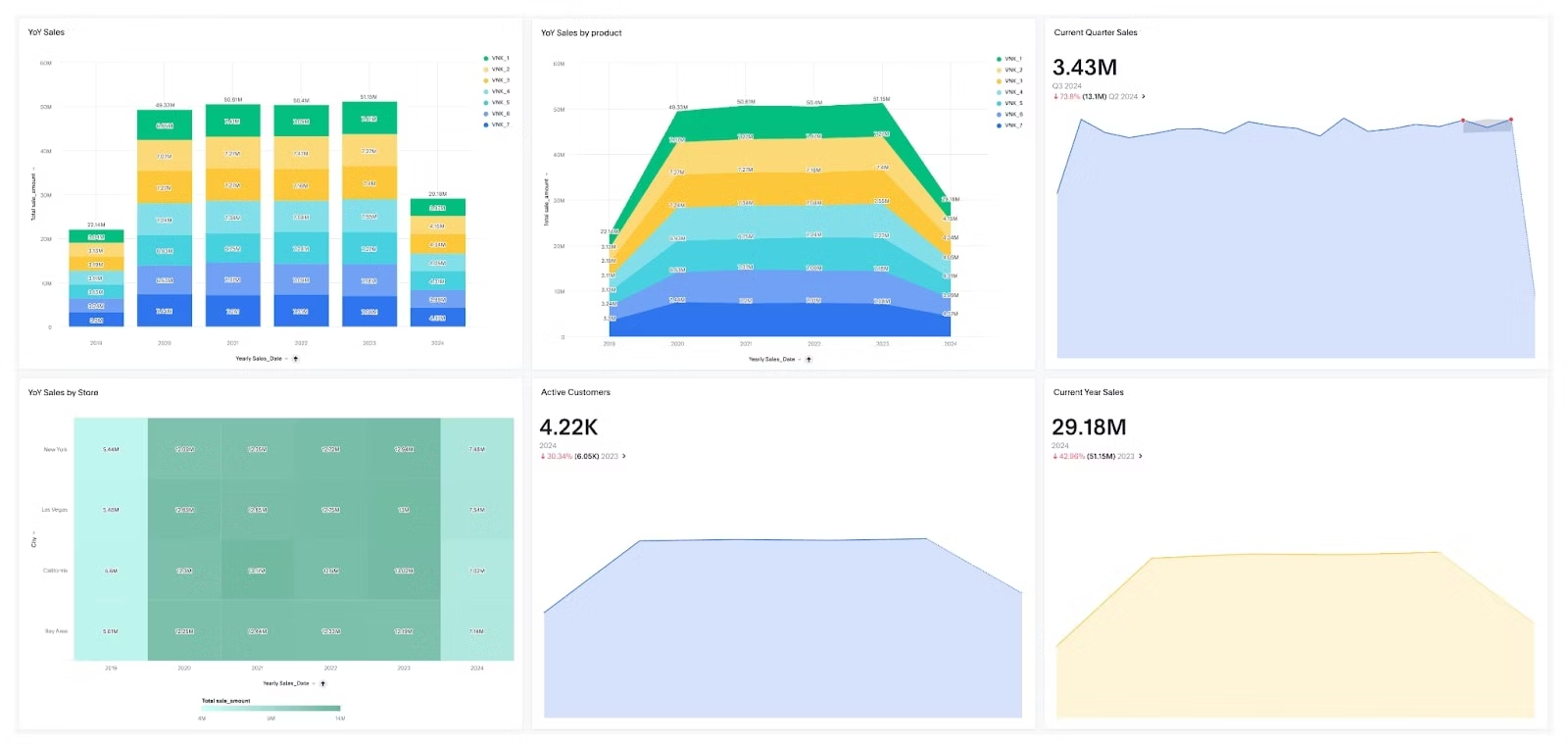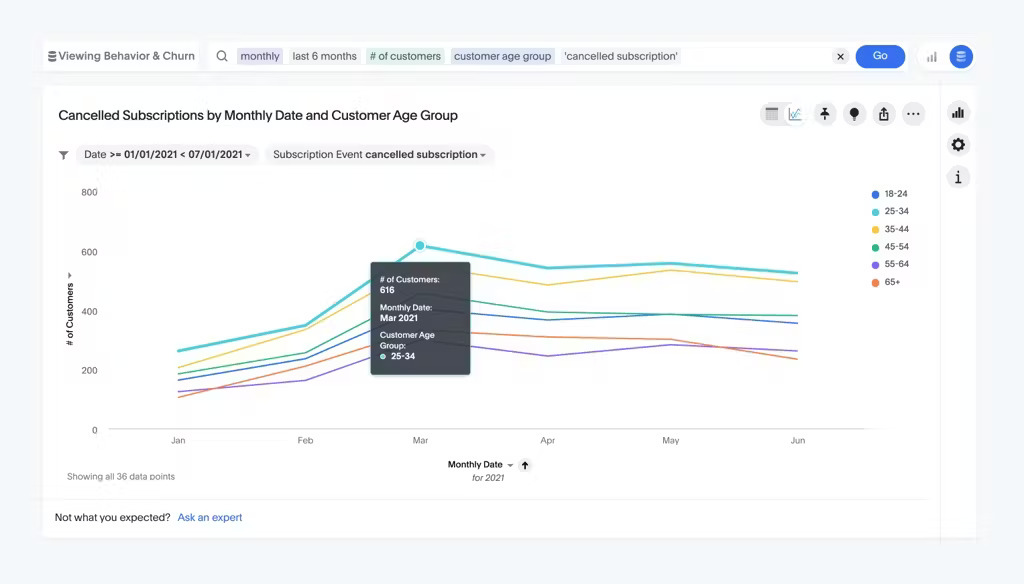Data might be the most powerful resource in this modern business world, but it’s also one of the most misunderstood. You’ve likely come across buzzwords like ”data-driven decisions” and “big data” in conversations, but without a proper strategy all that potential they promise can turn into a logistical nightmare. In fact, poorly managed data can do more harm than good, leaving businesses swamped with inaccuracies, compliance risks, and missed opportunities.
So, what’s the solution? A well-crafted data management strategy. This isn’t just about rearranging files or storing information. It’s about building a smarter, more nimble organization where every piece of data works for you—not against you.
Table of contents:
A data management strategy is a comprehensive plan that outlines how an organization collects, stores, organizes, and leverages its data. It defines the policies, processes, and technologies necessary to ensure that data is accurate, secure, and accessible to the right parties across the organization.
Think of it as building a solid foundation for your data house. Without a strategy in place, you risk making poor decisions based on bad data or struggling to keep up with data privacy regulations.
A strong data management strategy comes with a variety of benefits that drive everything from operational efficiency to compliance and decision-making. Here are some key advantages:
1. Improved data accuracy and consistency
A solid data management strategy ensures your data is clean, accurate, and up-to-date. Data accuracy and consistency eliminate duplicate or conflicting data, helping you avoid costly errors or misguided decisions based on bad information.
Pro tip: The right business intelligence software can help you clean up your data. ThoughtSpot's AI-driven insights can help ensure you’re always working with the most up-to-date and relevant data.
2. Enhanced decision-making
With a clear strategy in place, you can access high-quality data that empowers, faster, more informed decision-making. When your data is well-organized and easily accessible, executives and employees alike can derive actionable insights that drive growth.
ThoughtSpot’s powerful search-driven analytics allow business users to instantly explore and analyze data through simple, natural language queries. Teams can use Liveboards to interact in real-time, which allows them to turn data into actionable insights without relying on additional input from data teams.
3. Regulatory compliance
Data privacy regulations like GDPR, CCPA, and others require businesses to manage personal data with care. A good data management strategy helps you navigate these legal landscapes by ensuring data is stored, accessed, and handled in compliance with all relevant laws, greatly reducing the risk of fines and legal action.
4. Increased efficiency and productivity
When data is well-managed, teams can work smarter, not harder. Rather than wasting hours digging through disorganized data or troubleshooting issues as they arise, they can quickly find the right information when they need it. This accessibility leads to faster decision-making, fewer bottlenecks, and more streamlined workflows across departments. As a result, teams can focus their energy and talents on strategic initiatives, innovation, and other high-impact activities that move the business forward.
ThoughtSpot’s self-service analytics provides employees with easy access to business insights. With SpotIQ, users can automate data analysis to uncover hidden trends, boosting productivity by minimizing time spent on manual data exploration.
5. Reduced data silos
A data management strategy promotes data integration, ensuring different departments and systems across the organization can access the same information. Breaking down data silos makes it easier to collaborate and share insights from team to team.
6. Better customer insights and experience
By effectively managing data, organizations can gather a more complete view of customers, their behaviors, and their preferences. This approach enables more personalized interactions and improves the overall customer experience, ultimately building stronger relationships.
An AI-Powered Analytics platform like ThoughtSpot enables deeper insights into customer behaviors and preferences. With personalized insights and customer behavior tracking, companies can deliver tailored offers or recommendations, improving customer satisfaction and loyalty.

7. Scalability
A strong data management strategy is built to support both present needs and future growth. As your business expands, so does the volume, complexity, and variety of data you’ll need to administer. By creating a scalable data infrastructure, you can seamlessly handle this influx, ensuring your systems remain efficient and responsive. This kind of forward-thinking approach prevents data bottlenecks, minimizes downtime, and reduces the risk of system overload, all while keeping data accessible and well-organized. This scalability, in turn, enables your teams to maintain control, even as the business landscape shifts and demands grow.
Step 1: Define your business goals
Start by identifying what you want to achieve with your data. Understanding your business objectives will help ensure your data management strategy aligns with your goals, providing clear direction for how data can solve specific challenges and fuel growth.
For example, if your goal is to improve customer retention, your data management strategy should focus on gathering and analyzing customer behavior data.

Step 2: Conduct a data audit
Take stock of your current data landscape. Identify what data you already have, where it resides, how it’s being used, and who has access to it. A thorough audit can reveal gaps, inefficiencies, and areas where data integration is needed to improve access and usage across the organization.
Step 3: Establish data governance
Set up a data governance framework that clearly defines data ownership, roles, access levels, and how data will be managed. A strong governance plan ensures that data is secure, compliant with regulations, and used ethically across all teams.
With ThoughtSpot’s governance and security features, businesses can ensure that only authorized personnel access sensitive data, keeping your organization compliant with global data privacy standards.
Step 4: Integrate data and ensure quality
Plan how you’ll integrate data from various departments and systems into a single, accessible location. It’s important to ensure that the data being integrated is consistently clean, accurate, and up-to-date. A centralized approach helps improve data quality by reducing inconsistencies and errors, enabling teams across the organization to work with reliable, real-time data.
💡 Choosing the right data sources can be tough—discover why "Context is Gold" in the decision-making process.
Step 5: Establish data storage and retention policies
Decide where your data will be stored—on-premise, in the cloud, or using a hybrid approach—and establish clear policies for data retention. Storing data efficiently can help minimize costs and ensure compliance with regulations on data retention and disposal.
Step 6: Empower teams with self-service analytics
Provide your teams with easy-to-use tools that allow them to independently access and analyze data. Self-service analytics platforms like ThoughtSpot ensure employees can make data-driven decisions quickly without waiting on IT or data teams.
Step 7: Monitor and optimize your strategy
Regularly review how well your data management strategy is performing. Identify areas for improvement by monitoring KPIs such as data accessibility, decision-making speed, and data quality, making adjustments as business needs evolve or new technologies become available.
ThoughtSpot’s SpotIQ uses AI-driven analytics to automatically identify insights from your data without the need for manual querying. It continuously analyzes millions of data combinations to surface trends, anomalies, and key drivers that may otherwise go unnoticed. By integrating SpotIQ into your monitoring strategy, you can quickly detect areas for optimization, ensuring your data management remains effective and ahead of the curve.
Step 8: Leverage advanced analytics and AI
Once your data is well-managed, use advanced analytics tools and AI to dive deeper into trends, patterns, and predictions. With AI-Powered Insights from ThoughtSpot, your business can stay ahead of industry shifts, uncover new opportunities, and make more proactive decisions.
💡 Navigating the ever-changing GenAI landscape can be challenging—discover how ThoughtSpot’s GenAI Playbook helps you unlock real value from AI and avoid common pitfalls.
Even with a strong plan, implementing a data management strategy isn’t without its challenges:
Data silos: When different departments store and manage data independently, it can be difficult to get a holistic view. Breaking down these silos is critical for success.
Legacy systems: Older systems might not integrate well with modern data tools, making data consolidation tricky.
Cultural resistance: People often struggle with change, especially when it involves new data processes. Getting buy-in from stakeholders across the organization is key.
Start small to break down data silos: Begin by implementing your strategy in phases. Focus on one department or business function first, demonstrate success, and then scale up across the organization to encourage collaboration.
Modernize gradually to deal with legacy systems: Outdated systems often struggle to provide the flexibility and real-time insights modern data tools offer. Instead of sticking with cumbersome, siloed reporting solutions, ThoughtSpot enables you to leap ahead by offering instant access to real-time data-driven insights through its intuitive, AI-powered search interface.
Unlike legacy systems, which are often slow and rigid, ThoughtSpot delivers a nimble, scalable, user-friendly experience, empowering teams to analyze data on their own terms without heavy IT involvement.
Prioritize training to address cultural resistance: Change becomes easier when employees understand the benefits. Provide regular training to ensure everyone knows why data management matters and how to use the tools available to them.
Incorporating ThoughtSpot into your data management strategy can significantly enhance your organization's ability to leverage data effectively.
Why?
With its advanced features, ThoughtSpot empowers teams to access and analyze data independently, uncover actionable insights, and make informed decisions.
Moreover, you can streamline data access, improve data quality, and foster a culture of data-driven decision-making.
Take a look at how you can leverage ThoughtSpot while building a successful data management strategy—schedule a personalized live demo.








